#Full Stack Development program
Explore tagged Tumblr posts
Text
#Best full stack development institute#Full stack development courses 2025#Full stack developer training#Full stack development certification#Full stack course online/offline#Full stack development program#Full stack coding bootcamp
0 notes
Text
Exploring Full Stack: Mastering the Java Learning Platform for a Rewarding Career

The rapid advances in software and technology development have created an unprecedented demand for skilled individuals in this field. The trend is only expected to increase as the industry evolves. In such a demanding market, seizing the opportunity to become part of this rewarding industry would be of great importance. But how?
Well! You have the option to join a Full-stack development course or get a pro in the Java learning platform. If you are from an IT background, you must have a settled idea about these platforms already. Here is more on these courses to enable you to prepare well for your professional career ahead. Let’s start by getting a deeper insight into the Full Stack development course.
What Is A Full Stack Development Course?
This specific course covers the skills and technologies required to develop the client-side and back-end server side of web applications. It consists of HTML, CSS, and JavaScript. Besides, you may also learn Node.js, Python, Ruby on Rails, or Java, depending on your capabilities and grasping power.
A Full-stack development course also includes programming languages such as SQL or No SQL, version control systems (like Git), and frameworks. If you proceed further, you may have to learn topics like API development, deployment, and testing.
The course is wide, and it is important to research well before getting on it. The need is to understand your goals and the specific technology in which you want to build your career. It will help to boost your future in the IT sector even further.
When looking to enter the field of full-stack development, you must ensure the authenticity of the course. Renowned institutes offer study programs developed by only industry experts. This provides hands-on learning and a deep understanding of technologies.
After the course, you need to gear up for the challenges and opportunities ahead. The innovative and tech-first approach, combined with affordability, ensures that you receive the highest quality education. To ensure a specialised learning experience on Full Stack, you must learn Java Full Stack.
Full Stack Development Course: Enhancing Your Job Prospects
Java Full Stack is a specialised platform for developing dynamic web applications. This Java learning platform helps you acquire essential industry skills like React, Angular, Spring Boot, hibernate, and JSP. These highly skilled web services are instrumental in developing interactive and useful web applications.
Java is a versatile programming language used for both front-end and back-end development. It helps you build an entire web application and adds to your programming skills if you wish to stay relevant to the tech industry. By learning Java, you can increase your job prospects and career opportunities as well. Therefore, to raise your bar in the IT sector, it would be wise to join a full-stack development course today.
Summary: By joining the Full Stack development course, you can expose yourself to a new world of opportunities. Specifically, the opportunity to gain practical knowledge about the Java learning platform will equip you with the skills needed to build powerful and innovative web applications.
0 notes
Text
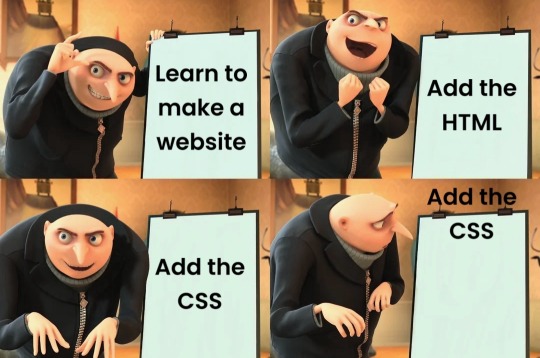
#programmer humor#programming#geek#nerd#programmer#technology#computer#phone#mac#windows#os#operating system#website#web development#dev#developer#development#full stack developer#frontend#backend#software#hardware#html#css#meme#despicable me#gru#joke#software engineer#apple
491 notes
·
View notes
Text
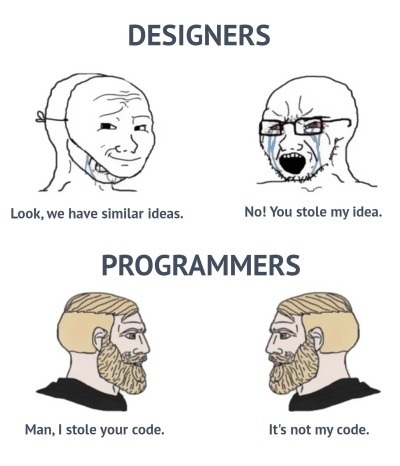
When you find out that your 'original' code is just a copy of a copy of a copy...
#programmer humor#programming#geek#nerd#programmer#computer#python#laptop#c#meme#pc#computer science#java#developer#software developers#full stack web development#code#cs#javascript#c++#software engineer#software development#dev#web development
133 notes
·
View notes
Text
How to become full-stack developer in just 8 steps:
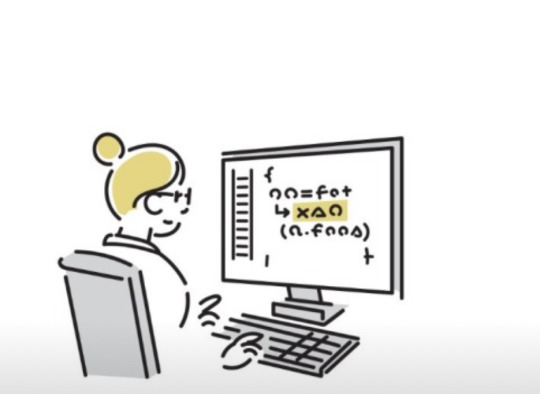
Step 1:- Learn HTML and CSS.
Step 2:- Learn JavaScript.
Step 3:- Learn React, Node.js
Step 4:- MySQL
Step 5:- MongoDB
Step 6:- Git Commands.
Step 7:- Build Projects and Push on GitHub.
Step 8:- Practice, Practice and Practice.
Anyone can be cool, But Awesome takes practice.
Trust me it takes time but you can do it.
#full stack development#full stack developers#webdevelopment#programming#progblr#codeblr#learn to code#learning#coding#studyblr#software
27 notes
·
View notes
Text
A question for all the developpers and coders here
Like how to improve myself in coding. The problem with me is that I don't grasp concepts well; I can learn something theoretically, but I forget it quickly. I tend to resort to copying and pasting from YouTube tutorials without fully understanding what i'm copying or even like take code from chatgbt , and I struggle with breaking down larger projects into smaller tasks. I don't know where to start or which method to follow. I feel stupid .
#cs major#web development#full stack developer#help#please help#advice#coding#programming#progblr#codeblr#computer science#stuck in the middle
16 notes
·
View notes
Text
Social media break end...
Hi again folks! I'm back after a lil hiatus. We all need time away from social media but now that I'm back, I will be posting up some handy tips in the upcoming weeks.
I've been accepted onto the CFG degree which starts next week. I can't wait to get stuck in and really delve into full stack programming.
I've got a personal project I'm working on that I'll share snippets of every now and then. Hopefully you'll be able to see the progress and enjoy the ride with me. (And of course, if you have any ideas on how to improve things I would be all ears!)
Happy coding lovelies!
❄️
4 notes
·
View notes
Text
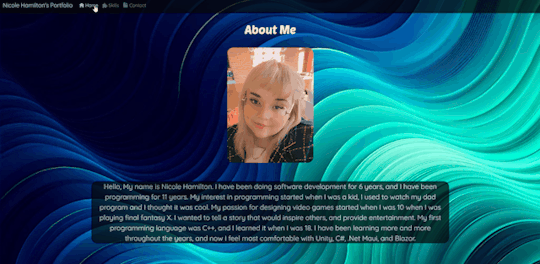
Days 128 to 129
I have worked hard on my portfolio site and added some cool animations and tool tips. I have done lots of prettying up as well. Tomorrow I'll fully implement the contact page.
#self improvement#cosmickittytalk#codeblr#csharp programming#csharp#csharp is superior#girls who code#programming#coding challenge#blazor#blazor programming#blazor website development#javascript#html css#html5 css3#htmlcoding#html5#css3#css animation examples#css#web development#website#front end development#full stack developer#coding for a year#coding#website development#website design#website animation#animated website
13 notes
·
View notes
Text
Project update (Next.js) + little API routing tutorial
So my last post was about setting up my back-end using Node.js and Sequelize. After setting everything up it was time to create needed routes and queries. I didn't look too much into how to do it, just made an api folder, made a .ts file for every table I have in my database and filled it with CRUD operations + whatever additional query was needed.

After writing all of this I wondered how do I define links for all of these operations? Well as it turns out, when you put files in an api folder in Next.js, they generate by themself, meaning all of my crud operations were now under the same /api/file_table_name link. Obviously that's bad news. It took me 2 days of rearranging (it wasn't hard, just boring XD) and I got this structure

(This is not an entire structure, just a snippet because the whole structure is kinda big and pointless for demonstration)
So now for getting host/api/tag we have an index.ts file which carries the createTag function which requires just a body that contains new tagName.
For host/api/tag/id we have the [id].ts which carries getTagById and DeleteTag function. Now how do we differentiate between those two operations when they are on the same link?

At the end of your file you should have a handler function for which you write the cases in which certain operation happen. In this case it only depends on the http method, but it is possible to add other cases such as potential query string (the on that start with ? in the link ex. api/posts?sort=asc). Here's the code example from my /stickerpack/[id].ts file

So this means the link is going to be host/api/stickerpack/id?type="".
What surprised me was that you don't fetch id with req.params.id, but you fetch everything with req.query, and Next.js I guess just figures out what is a parameter and what is not based on the file name. Another surprising thing is the obvious "id as any" situation XD. It did not work any other way. No idea why. I'll look it up when I get the energy.
That's my wisdom for today, if you have any questions feel free to ask me anywhere XD I'm no professional tho lol
#codeblr#progblr#code#nextjs#full stack web development#webdevelopment#student#studyblr#tutorial#programming#computer science#backend#nodejs#women in stem
33 notes
·
View notes
Text
Which is better full stack development or testing?
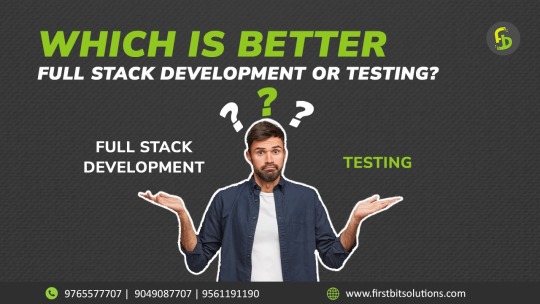
Full Stack Development vs Software Testing: Which Career Path is Right for You?
In today’s rapidly evolving IT industry, choosing the right career path can be challenging. Two popular options are Full Stack Development and Software Testing. Both of these fields offer unique opportunities and cater to different skill sets, making it essential to assess which one aligns better with your interests, goals, and long-term career aspirations.
At FirstBit Solutions, we take pride in offering a premium quality of teaching, with expert-led courses designed to provide real-world skills. Our goal is to help you know, no matter which path you choose. Whether you’re interested in development or testing, our 100% unlimited placement call guarantee ensures ample job opportunities. In this answer, we’ll explore both career paths to help you make an informed decision.
Understanding Full Stack Development
What is Full Stack Development?
Full Stack Development involves working on both the front-end (client-side) and back-end (server-side) of web applications. Full stack developers handle everything from designing the user interface (UI) to managing databases and server logic. They are versatile professionals who can oversee a project from start to finish.
Key Skills Required for Full Stack Development
To become a full stack developer, you need a diverse set of skills, including:
Front-End Technologies: HTML, CSS, and JavaScript are the fundamental building blocks of web development. Additionally, proficiency in front-end frameworks like React, Angular, or Vue.js is crucial for creating dynamic and responsive web interfaces.
Back-End Technologies: Understanding back-end programming languages like Node.js, Python, Ruby, Java, or PHP is essential for server-side development. Additionally, knowledge of frameworks like Express.js, Django, or Spring can help streamline development processes.
Databases: Full stack developers must know how to work with both SQL (e.g., MySQL, PostgreSQL) and NoSQL (e.g., MongoDB) databases.
Version Control and Collaboration: Proficiency in tools like Git, GitHub, and agile methodologies is important for working in a collaborative environment.
Job Opportunities in Full Stack Development
Full stack developers are in high demand due to their versatility. Companies often prefer professionals who can handle both front-end and back-end tasks, making them valuable assets in any development team. Full stack developers can work in:
Web Development
Mobile App Development
Enterprise Solutions
Startup Ecosystems
The flexibility to work on multiple layers of development opens doors to various career opportunities. Moreover, the continuous rise of startups and digital transformation initiatives has further fueled the demand for full stack developers.
Benefits of Choosing Full Stack Development
High Demand: The need for full stack developers is constantly increasing across industries, making it a lucrative career choice.
Versatility: You can switch between front-end and back-end tasks, giving you a holistic understanding of how applications work.
Creativity: If you enjoy creating visually appealing interfaces while also solving complex back-end problems, full stack development allows you to engage both creative and logical thinking.
Salary: Full stack developers typically enjoy competitive salaries due to their wide skill set and ability to handle various tasks.
Understanding Software Testing
What is Software Testing?
Software Testing is the process of evaluating and verifying that a software product or application is free of defects, meets specified requirements, and functions as expected. Testers ensure the quality and reliability of software by conducting both manual and automated tests.
Key Skills Required for Software Testing
To succeed in software testing, you need to develop the following skills:
Manual Testing: Knowledge of testing techniques, understanding different testing types (unit, integration, system, UAT, etc.), and the ability to write test cases are fundamental for manual testing.
Automated Testing: Proficiency in tools like Selenium, JUnit, TestNG, or Cucumber is essential for automating repetitive test scenarios and improving efficiency.
Attention to Detail: Testers must have a keen eye for identifying potential issues, bugs, and vulnerabilities in software systems.
Scripting Knowledge: Basic programming skills in languages like Java, Python, or JavaScript are necessary to write and maintain test scripts for automated testing.
Job Opportunities in Software Testing
As the demand for high-quality software increases, so does the need for skilled software testers. Companies are investing heavily in testing to ensure that their products perform optimally in the competitive market. Software testers can work in:
Manual Testing
Automated Testing
Quality Assurance (QA) Engineering
Test Automation Development
With the rise of Agile and DevOps methodologies, the role of testers has become even more critical. Continuous integration and continuous delivery (CI/CD) pipelines rely on automated testing to deliver reliable software faster.
Benefits of Choosing Software Testing
Job Security: With software quality being paramount, skilled testers are in high demand, and the need for testing professionals will only continue to grow.
Quality Assurance: If you have a knack for perfection and enjoy ensuring that software works flawlessly, testing could be a satisfying career.
Automated Testing Growth: The shift toward automation opens up new opportunities for testers to specialize in test automation tools and frameworks, which are essential for faster releases.
Flexibility: Testing provides opportunities to work across different domains and industries, as almost every software product requires thorough testing.
Full Stack Development vs Software Testing: A Comparative Analysis
Let’s break down the major factors that could influence your decision:
Factors
Full Stack Development
Software Testing
Skills
Proficiency in front-end and back-end technologies, databases
Manual and automated testing, attention to detail, scripting
Creativity
High – involves creating and designing both UI and logic
Moderate – focuses on improving software through testing and validation
Job Roles
Web Developer, Full Stack Engineer, Mobile App Developer
QA Engineer, Test Automation Engineer, Software Tester
Career Growth
Opportunities to transition into senior roles like CTO or Solution Architect
Growth towards roles in automation and quality management
Salary
Competitive with wide-ranging opportunities
Competitive, with automation testers in higher demand
Demand
High demand due to increasing digitalization and web-based applications
Consistently high, especially in Agile/DevOps environments
Learning Curve
Steep – requires mastering multiple languages and technologies
Moderate – requires a focus on testing tools, techniques, and automation
Why Choose FirstBit Solutions for Full Stack Development or Software Testing?
At FirstBit Solutions, we provide comprehensive training in both full stack development and software testing. Our experienced faculty ensures that you gain hands-on experience and practical knowledge in the field of your choice. Our 100% unlimited placement call guarantee ensures that you have ample opportunities to land your dream job, no matter which course you pursue. Here’s why FirstBit is your ideal training partner:
Expert Trainers: Learn from industry veterans with years of experience in development and testing.
Real-World Projects: Work on real-world projects that simulate industry scenarios, providing you with the practical experience needed to excel.
Job Assistance: Our robust placement support ensures you have access to job openings with top companies.
Flexible Learning: Choose from online and offline batch options to fit your schedule.
Conclusion: Which Career Path is Right for You?
Ultimately, the choice between full stack development and software testing comes down to your personal interests, skills, and career aspirations. If you’re someone who enjoys building applications from the ground up, full stack development might be the perfect fit for you. On the other hand, if you take satisfaction in ensuring that software is of the highest quality, software testing could be your calling.
At FirstBit Solutions, we provide top-notch training in both fields, allowing you to pursue your passion and build a successful career in the IT industry. With our industry-aligned curriculum, expert guidance, and 100% placement call guarantee, your future is in good hands.
So, what are you waiting for? Choose the course that excites you and start your journey toward a rewarding career today!
#education#programming#tech#technology#training#python#full stack developer#software testing#itservices#java#.net#.net developers#datascience
2 notes
·
View notes
Text
#Best full stack development institute#Full stack development courses 2025#Full stack developer training#Full stack development certification#Full stack course online/offline#Full stack development program#Full stack coding bootcamp
0 notes
Text
A Principal Full Stack Developer is a senior-level professional responsible for overseeing the end-to-end development process of web applications, from front-end to back-end. They lead teams, architect solutions, and ensure the technical quality and scalability of projects. Their expertise spans multiple programming languages, frameworks, and technologies, allowing them to design robust, efficient systems. With a focus on both technical excellence and strategic vision, they drive innovation, mentor junior developers, and collaborate closely with stakeholders to deliver high-quality software solutions.
2 notes
·
View notes
Text
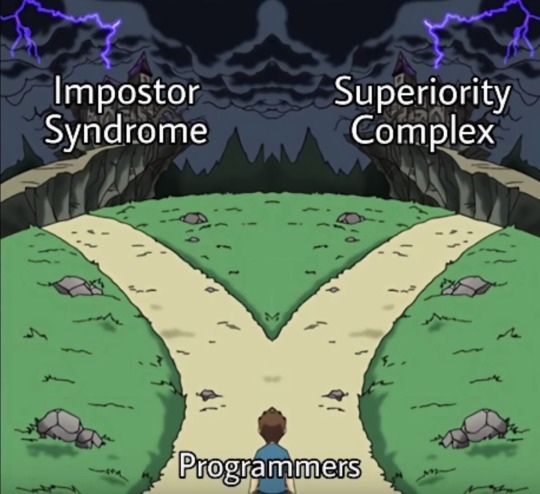
Honestly I can be both, it really depends on the day 🤷♀️
#programmer humor#programming#geek#nerd#programmer#full stack#dev#developer#development#technology#programming meme#development meme#developer meme#imposter syndrome#superiority complex#meme#joke#humour#web development#app developmenr#full stack developer#frontend#backend#pc#laptop#computer#computer science#cs#ai
173 notes
·
View notes
Text
Master Java Development: Full Stack Java Developer Course Online
Unlock your potential with our comprehensive Full Stack Java Developer Course. Whether you're a beginner or an experienced developer, our program caters to all skill levels. Dive into the world of Java programming and learn the fundamentals from scratch. Our expert instructors will guide you through hands-on projects, real-world scenarios, and industry best practices. By the end of the course, you'll have the skills and knowledge to develop robust, scalable applications using Java
#full stack Java developer course#java developer course#learn java online#java programming course#study#study space#studymaterial
2 notes
·
View notes
Text
Frontend Projects Ideas
ADVANCED
1. E-commerce Website
2. Social Network
3. Online Learning Platform
4. Music Streaming Service
5. Real Estate Listing
6. Project Management Tool
7. Chatbot Interface
8. Job Board
9. Weather Forecast with Al
10. Stock Trading Platform
11. loT Dashboard
12. Voice Assistant Interface
13. Expense Report Generator
14. Augmented-Reality App
15. Interactive 3D Graphics
16. Blockchain Explorer
17. Machine-Learning Dashboard
18. Language Learning App
19. Financial Planning
20. Astronomy Viewe
#codeblr#code#coding#learn to code#progblr#programming#software#studyblr#front end developers#front end development#web developers#full stack web development#full stack developer#full stack development#learning#tech#technology#my projects
32 notes
·
View notes
Text
My Favorite Full Stack Tools and Technologies: Insights from a Developer
It was a seemingly ordinary morning when I first realized the true magic of full stack development. As I sipped my coffee, I stumbled upon a statistic that left me astounded: 97% of websites are built by full stack developers. That moment marked the beginning of my journey into the dynamic world of web development, where every line of code felt like a brushstroke on the canvas of the internet.
In this blog, I invite you to join me on a fascinating journey through the realm of full stack development. As a seasoned developer, I’ll share my favorite tools and technologies that have not only streamlined my workflow but also brought my creative ideas to life.
The Full Stack Developer’s Toolkit
Before we dive into the toolbox, let’s clarify what a full stack developer truly is. A full stack developer is someone who possesses the skills to work on both the front-end and back-end of web applications, bridging the gap between design and server functionality.
Tools and technologies are the lifeblood of a developer’s daily grind. They are the digital assistants that help us craft interactive websites, streamline processes, and solve complex problems.
Front-End Favorites
As any developer will tell you, HTML and CSS are the foundation of front-end development. HTML structures content, while CSS styles it. These languages, like the alphabet of the web, provide the basis for creating visually appealing and user-friendly interfaces.
JavaScript and Frameworks: JavaScript, often hailed as the “language of the web,” is my go-to for interactivity. The versatility of JavaScript and its ecosystem of libraries and frameworks, such as React and Vue.js, has been a game-changer in creating responsive and dynamic web applications.
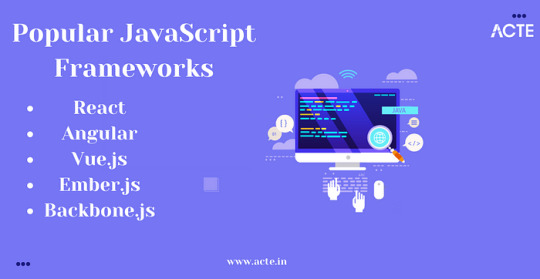
Back-End Essentials
The back-end is where the magic happens behind the scenes. I’ve found server-side languages like Python and Node.js to be my trusted companions. They empower me to build robust server applications, handle data, and manage server resources effectively.
Databases are the vaults where we store the treasure trove of data. My preference leans toward relational databases like MySQL and PostgreSQL, as well as NoSQL databases like MongoDB. The choice depends on the project’s requirements.
Development Environments
The right code editor can significantly boost productivity. Personally, I’ve grown fond of Visual Studio Code for its flexibility, extensive extensions, and seamless integration with various languages and frameworks.
Git is the hero of collaborative development. With Git and platforms like GitHub, tracking changes, collaborating with teams, and rolling back to previous versions have become smooth sailing.
Productivity and Automation
Automation is the secret sauce in a developer’s recipe for efficiency. Build tools like Webpack and task runners like Gulp automate repetitive tasks, optimize code, and enhance project organization.
Testing is the compass that keeps us on the right path. I rely on tools like Jest and Chrome DevTools for testing and debugging. These tools help uncover issues early in development and ensure a smooth user experience.
Frameworks and Libraries
Front-end frameworks like React and Angular have revolutionized web development. Their component-based architecture and powerful state management make building complex user interfaces a breeze.
Back-end frameworks, such as Express.js for Node.js and Django for Python, are my go-to choices. They provide a structured foundation for creating RESTful APIs and handling server-side logic efficiently.
Security and Performance
The internet can be a treacherous place, which is why security is paramount. Tools like OWASP ZAP and security best practices help fortify web applications against vulnerabilities and cyber threats.
Page load speed is critical for user satisfaction. Tools and techniques like Lighthouse and performance audits ensure that websites are optimized for quick loading and smooth navigation.
Project Management and Collaboration
Collaboration and organization are keys to successful projects. Tools like Trello, JIRA, and Asana help manage tasks, track progress, and foster team collaboration.
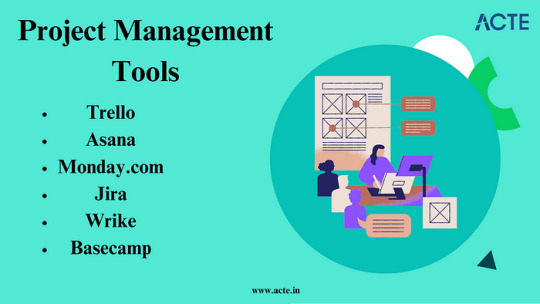
Clear communication is the glue that holds development teams together. Platforms like Slack and Microsoft Teams facilitate real-time discussions, file sharing, and quick problem-solving.
Personal Experiences and Insights
It’s one thing to appreciate these tools in theory, but it’s their application in real projects that truly showcases their worth. I’ve witnessed how this toolkit has brought complex web applications to life, from e-commerce platforms to data-driven dashboards.
The journey hasn’t been without its challenges. Whether it’s tackling tricky bugs or optimizing for mobile performance, my favorite tools have always been my partners in overcoming obstacles.
Continuous Learning and Adaptation
Web development is a constantly evolving field. New tools, languages, and frameworks emerge regularly. As developers, we must embrace the ever-changing landscape and be open to learning new technologies.
Fortunately, the web development community is incredibly supportive. Platforms like Stack Overflow, GitHub, and developer forums offer a wealth of resources for learning, troubleshooting, and staying updated. The ACTE Institute offers numerous Full stack developer courses, bootcamps, and communities that can provide you with the necessary resources and support to succeed in this field. Best of luck on your exciting journey!
In this blog, we’ve embarked on a journey through the world of full stack development, exploring the tools and technologies that have become my trusted companions. From HTML and CSS to JavaScript frameworks, server-side languages, and an array of productivity tools, these elements have shaped my career.
As a full stack developer, I’ve discovered that the right tools and technologies can turn challenges into opportunities and transform creative ideas into functional websites and applications. The world of web development continues to evolve, and I eagerly anticipate the exciting innovations and discoveries that lie ahead. My hope is that this exploration of my favorite tools and technologies inspires fellow developers on their own journeys and fuels their passion for the ever-evolving world of web development.
#frameworks#full stack web development#web development#front end development#backend#programming#education#information
4 notes
·
View notes